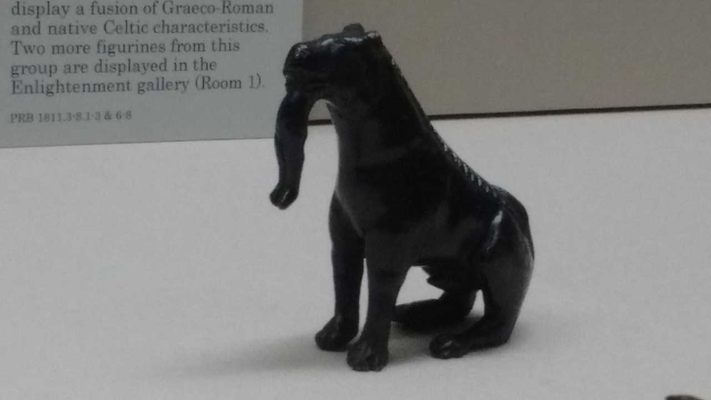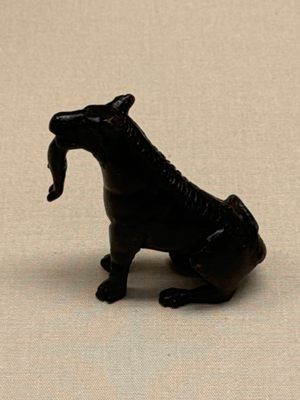About
In the Romano-Briton galleries of the British Museum, a small and eerie sculpture can be seen. It is known as the "wolf-god of Woodeaton" and is an artifact genuinely shrouded in mystery.
The figurine portrays a great muscular lupine creature. This hulking beast is shown devouring a human corpse whose lower half hangs limply from the beast's ravenous maw like a rag doll. The artifact was discovered in the 1800s in a rural Oxfordshire village called Woodeaton during an excavation by an archeologist and antiquities collector who later donated it to the museum.
Carbon dating and the study of the sculpture's stylistic characteristics suggest the wolf-god was made at some point during the period of the Roman occupation of Celtic Britain, between 43 to 410. In the first century, an important shrine stood in the village that was used by Roman and Celtic pagans and later briefly by Christians. This has made the area an important archeological site for finding votive offerings to the gods worshipped during this period. The Woodeaton wolf-god is undoubtedly an object with a religious significance, but the nature of this meaning remains a mystery largely lost to history.
Wolves were an important symbol to the Romans, both linking them with their ancient origins and representing the imperial military might of the empire. The Romans believed the mythical founders of their city and civilization, Romulus and Remus, had been suckled and raised by a she-wolf, the "Lupa-Romana." But the animal was also heavily associated with the Roman god of war, Mars, whose sacred animal was the wolf. Accounts suggest that if a wolf appeared during a battle it was taken to be a sign of an impending Roman victory.
Celtic Britons are also known to have revered the wolf, an animal then common across the British Isles but sadly now extinct. They believed it to be a creature associated with the underworld and death. According to Roman accounts, the ancient Britons worshipped a deity known as "Cunomaglus" ("Wolf Lord") among their pantheon of gods, and it's said there were a number of secretive cults that worshipped this god.
Beyond these scant references from Roman chronicles, nothing more is known about the nature and form of these religious conceptions of the wolf, largely because the ancient Britons left no written records of their cosmology. The wolf-god therefore remains an esoteric and enigmatic object of gruesome beauty, and in spite of its size, is perhaps one of the most mysterious and enchanting of objects to be found in the European galleries of the British Museum.
Related Tags
Know Before You Go
You can find the wolf-god in the Romano-British Room (Room 49) of the British Museum where it's displayed in one of the glass exhibit cases on the right-hand side of the room. The British Museum is open daily from 10 a.m. to 5:30 p.m. and from 10 a.m. to 8:30 p.m. on Fridays. Entrance is free.
Community Contributors
Added By
Published
April 3, 2019








































